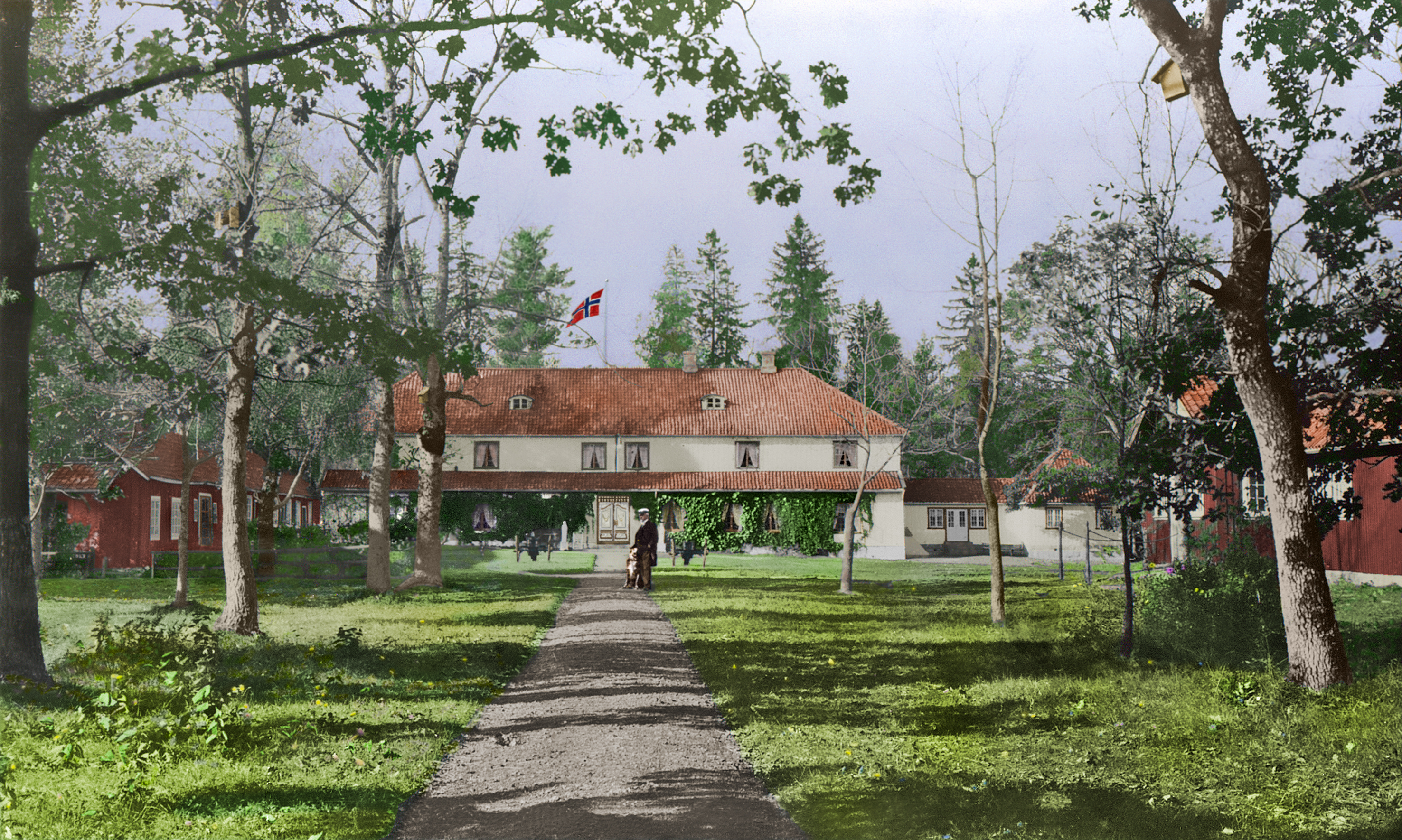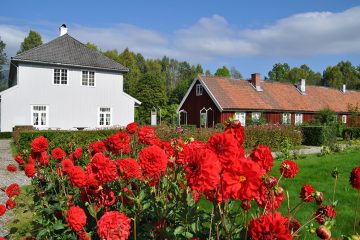When the ironworks was established in 1697, a two-story farm facility lied here, named “Eid”. Major General and ironworks owner Caspar Herman Hausmann furnished the house as an administration buidling for the ironworks. The farm was only used during summers though, and from the building’s second floor, Lady of the house Karen Toller could enjoy a perfect view over the formal garden she and her husband were landscaping.
Their son Fredrik Ferdinand tore down the main building and erected a one-story, symmetrical building in the 1740s. It outlines the ground floor of the present main building. In the 1780s the characteristic second floor was probably built by Bartholomeus Rasch. It resembles the manorial roof, where the uppermost part is cut off from the bottom part by an additional strip of wall and often an additional line of windows, a structure that is far more common in Sweden.
Among the most well-knowned owners, we find Peder Cappelen and his wife marie Christine, who purchased the ironworks in 1873. They were from the city of Drammen, where he was a grocer and timber merchant. The couple lived here while their big mansion in Drammen was rebuilt after a fire in the early 1800s. Eidsfos Manor was the Schwartz-family’s residence up until 1987, Read more about the buildings history here.
Eidsfos Manor testifies to the heyday of the ironworks. It was listed for protection by the Directorate for Cultural Heritage as early as 1923. Today it is run as a banqueting facility for life’s big and small events. The restaurant is also open during big events and markets at Eidsfoss, and an art gallery resides in the Cavalier Wing in the summer season.
Eidsfos manor is built in rococo style. The surrounding garden was one of Norways finest Renaissance gardens, With 16 parterres – a sort of eastern equivalent to the Barony of Rosendal, as well as a big English-style park. In the 1950s, the garden was replaced by a less work intensive lawn. In the 1990s, 4 of the parterres you can see today, were restored as part of a master thesis at Ås Agricultural University. All the maintenance work is done voluntarily by Eidsfos Manor Foundations members. The hope is that the original garden one day can be experienced in its full splendor.
A great restoration work has been done inside the building as well. Hand painted wallpapers and conteporary furniture secure that special manorial atmosphere at banquets and dinner parties.
The Cavalier Wing (Approx. 1700)
This is where the male guests, mainly military, stayed.
The Stables
Across the yard from the Cavalier wing, you find the remaining foundation to the stables that burned to the ground in 1910. The ironworks had approx. 20-25 horses at the most.
The Vestal Virgins
The two female statues guarding the entrance are the Vestal Virgins. In Roman mythology they are the guardians of the home. Originally these ladies were part of a stove that probably were produced at Bærum ironworks. They could have been sent here as scrap for remelting.
Contact:
Helmut Hammerl
Phone: 45 955 262/ 46 636 038
E-mail: helmut@eidsfos-hovedgard.no
Visiting adress:
Gårdsgata 1
3095 Eidsfoss



